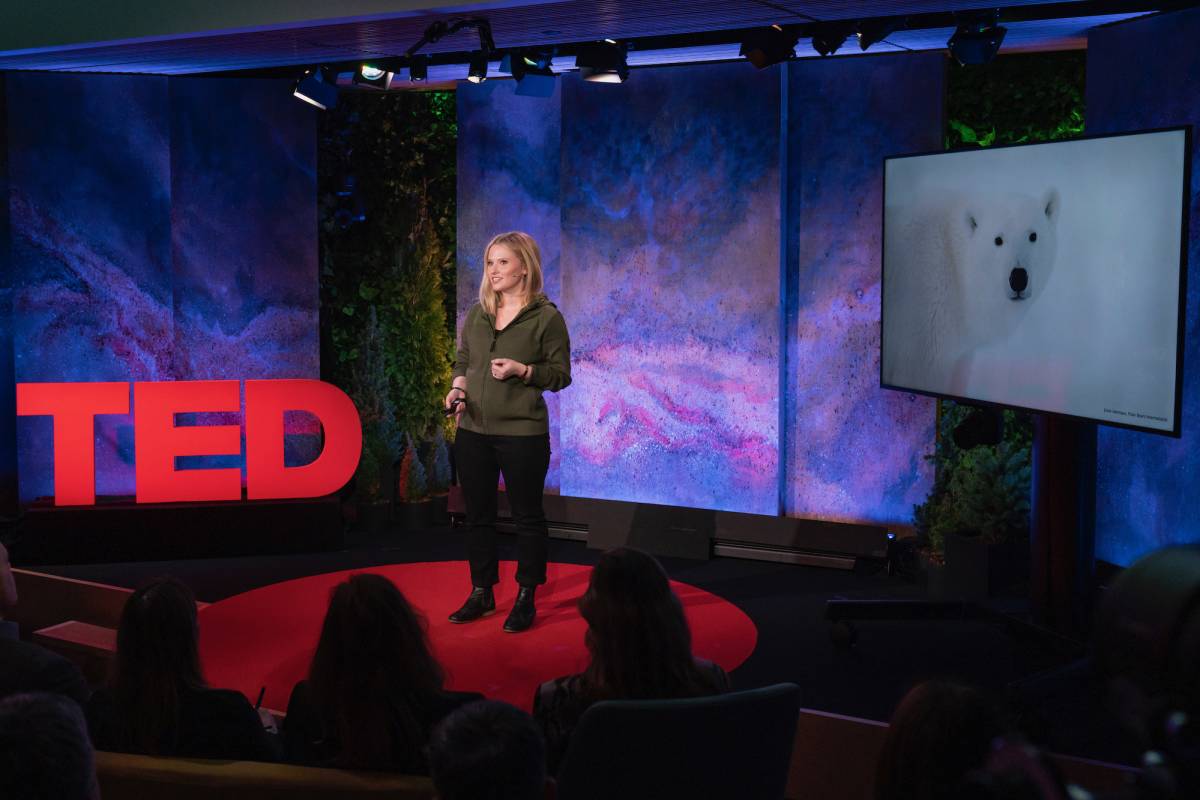I started by working with my fabulous TED coach, Briar, to develop my first draft. She encouraged me to stick to about 1200 words, but by my third draft, my talk had ballooned to >4400 words in my desperation to squeeze everything I wanted to say into the scant 11 minutes I was allotted. Briar skillfully helped me pare it back down while keeping my key points, all of which related to my “throughline”—the crux of my talk. She also reminded me I would be able to post supplemental information when the talk was released, a huge relief. All told it was a great exercise in “less is more”.
Over the next few months I had many late night writing sessions. These involved me repeatedly falling down information rabbit holes, going off on writing tangents, and then having to circle back to painstakingly cut out large swaths of text (all while talking to myself way too much!). At last, after two practice runs in front of TED staff and on lucky draft number 13, I was ready to start rehearsing the final product.
It was daunting, but the TED team had our backs the whole way. My fellow speakers and I took part in a “Precision Learning Bootcamp” to teach us how to memorize our scripts. They presented us with several tested options depending on how we learn best; I chose to color-code my script and print it out for visual help and occasionally (and embarrassedly) practiced in public places for the real-life adrenaline rush. I rehearsed constantly in the shower, the kitchen, my car, on walks, at the park, and anywhere in between, aiming for at least 3x a day.
I started to feel ready. Until I landed in New York and met my fellow speakers.
Upon seeing the company I was in, I was humbled and intimidated. “How did I get here?”, I thought. But imposter syndrome was not entertained by anyone, and we were all reminded that we were chosen, trained, and ready, and that our ideas mattered. I felt a part of something bigger and got excited to “give my talk away,” as the TED team would say.


















